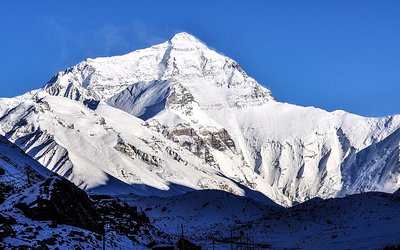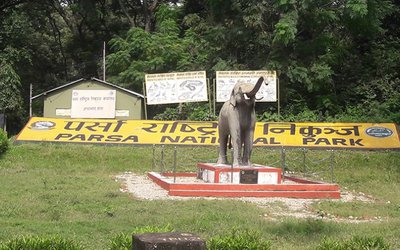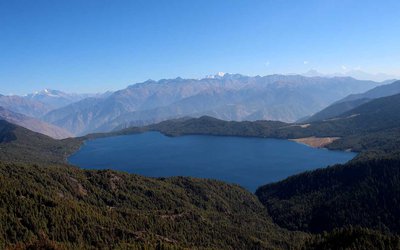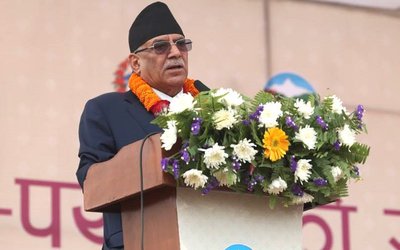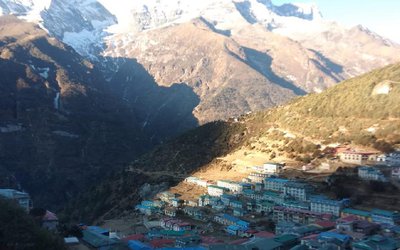- A Dornier 228-202 passenger plane, operated by Sita Air, was destroyed when it crashed shortly after takeoff from Kathmandu’s Tribhuvan Airport (TA), Nepal. All 19 on board were killed. At an altitude of 50 feet, the airplane was hit by a bird. According to the CAAN, a vulture struck the right hand engine of the aircraft.
- A Twin Otter of Nepal Airlines slipped at the taxi way in Jomsom but there was no casualty and damage to the aircraft.
- Tara Air Twin Otter flying to Nepalgunj from Simikot, Humla, met a minor accident while taking off at Simikot Airport. The aircraft was badly damaged. Chief of CAAN at Simikot Airport Tek Bahadur Patali said the plane hit the pole after over-steering toward left of the runway while taking off. The pole was erected to operate a crusher for repair of the airport.
Although these airplanes crashed in different circumstances and different places, civil aviation experts, however, see a similar cause behind these accidents. They pointed towards the failure of pilots to handle airplanes at the emergency situations.
“When some emergency situations arrive, pilots, who are supposed to avert the crisis and safely handle the plane, are cease to act themselves, causing the fatal accidents. Pilots are trained to handle all kinds of emergency situations and safely land the aircraft in any circumstance,” said an expert.
The bird-hit is a common phenomenon around the world and the bird is not the only factor to make the flight unsafe. The safety of aircraft depends upon pilots and the craft’s mechanical state. For instance, when a bird hit Buddha Air’s plane in Biratnagar damaging the window of the front cockpit, the pilot managed the situation and safely landed the aircraft.
Like in other parts of the world, when an accident occurs it is investigated by the committee set up by the government with jurisdiction over the area where a plane goes down. The sole objective of such a committee is to prevent accidents and incidents. Investigations are conducted in accordance with the international standards and recommended practices as described in ICAO Annex 13 - Aircraft accident and incident investigation.
Since the first aircraft accident in 7 May 1946 in Simara, there have been 31 fatal accidents in Nepal with 683 casualties, and the committees formed by the government have pointed out human error for the accidents.
Although flying is statistically one of the safest means of transportation, pilots are humans and do make mistakes. Unfortunately, a pilot's error can lead to catastrophic consequences and cost people their lives. Pilot error accounts for 49 percent of all aviation accidents, and approximately 83 percent of all private aircraft accidents worldwide and Nepal is no exception.
"Pilot error" can be defined as a mistake, oversight, lapse of judgment, or failure to exercise due care by the pilot of an aircraft while it is in operation. Some examples of pilot error include: Incorrect use of aircraft equipment, such as safety or landing gear, errors in navigation, sometimes due to inclement weather, miscommunication with air traffic controllers, inadequate monitoring of speed, altitude and other flight parameters, failure to manage fuel levels and failure to follow procedures in safety checklists. Although pilot errors are unintentional, they make up for a huge price to pay.
Nepal relies heavily on its fleet of ageing aircraft for STOL airport which are often used to bring supplies as well as passengers to remote areas.
A report released by the investigative panel constituted to probe Agni Air plane crash in Jomsom outlined how the pilots failed to respond effectively to the problems when the plane reported the 'light indication problem'. The investigators have made 14 safety recommendations that include single fleet policy to be strictly adhered to at the earliest. They also said CAAN pilots should maintain sufficient flying hours on the type of aircraft, especially on the STOL fields.
The tragedy occurred when the plane heading to Jomsom from Pokhara with 18 passengers and three crew members on board crashed into a hill during landing at the Jomsom airport.
The PIC and the assisting pilot were busy in the cockpit after the problem surfaced, and suddenly things started to go wrong when both of them engaged to fix it, making them unaware of the situation outside, the report said. The aircraft took its course itself for a while. Then, the pilots responded to the situation by executing a sharp left U-turn at a very low speed and altitude.
Accidents can occur anywhere in the world, and, therefore, it is unjust to blame Nepal as an insecure place. What Nepal needs to do is to improve the personal capability of pilots to handle the emergency. As the number of aircraft increases, Nepal needs to introduce strict measures to reduce the human error.
- TANAHU HYDROPOWER PROEJCT: A Significant Achievement
- Apr 15, 2024
- AMBASSADOR HANAN GODAR: Sharing Pain With A Nepali Family
- Mar 30, 2024
- VISIT OF KfW AND EIB TO NEPAL : Mission Matters
- Mar 25, 2024
- NEPAL BRITAIN SOCIETY: Pratima Pande's Leadership
- Mar 24, 2024
- NEPAL ARMY DAY: Time To Recall Glory
- Mar 15, 2024

